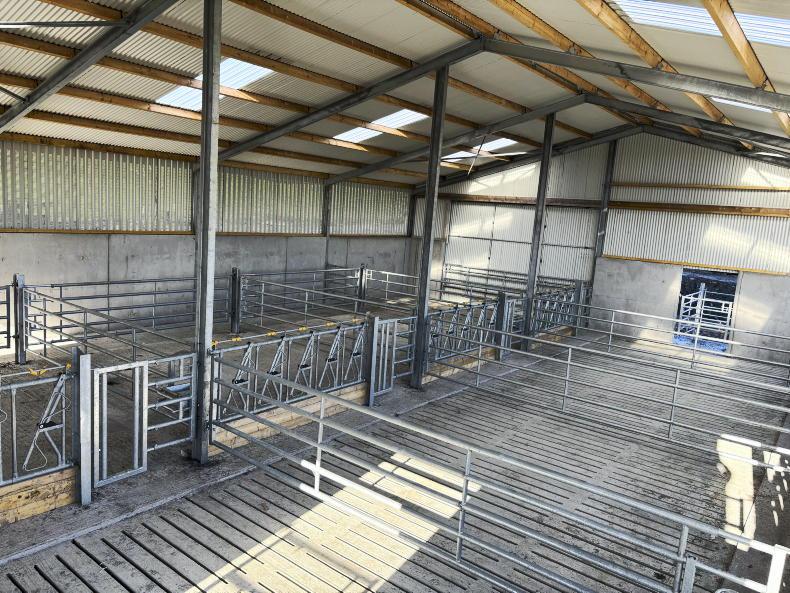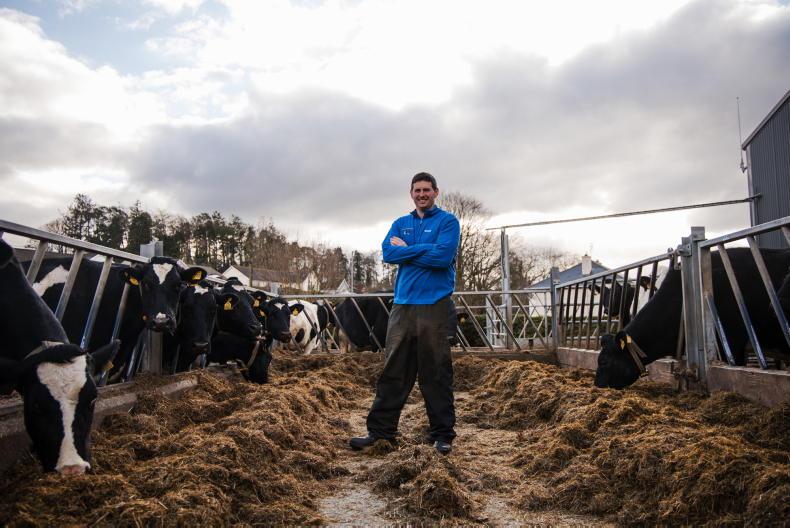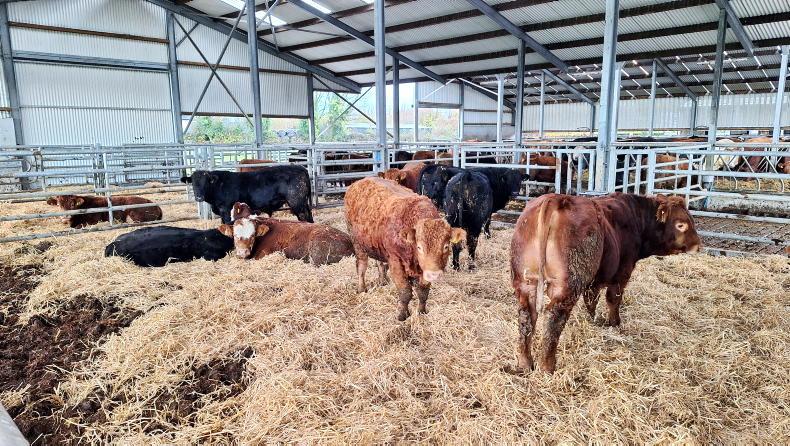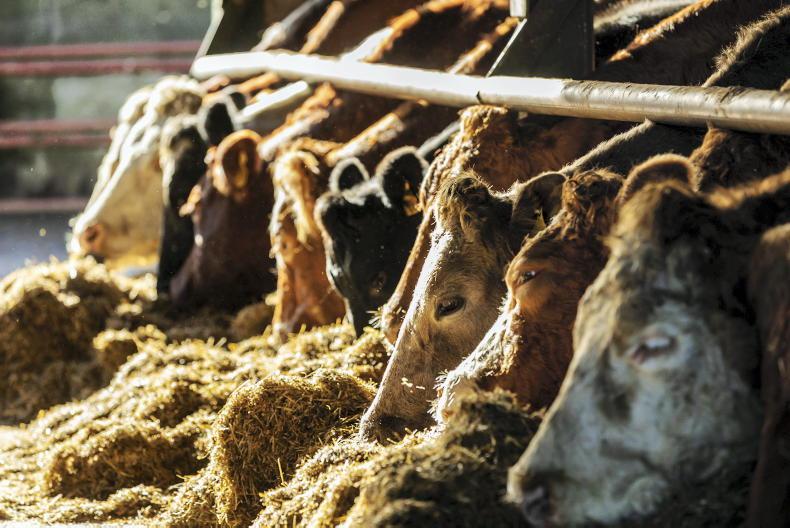Heavy rain over the past week to 10 days has seen ground conditions deteriorating rapidly on livestock farms, pushing many farmers to start housing cattle.
Housing time always poses a challenge to animal health and can undo all the hard work in getting weight on to cattle this year.
Where housing is under way or cattle are likely to come inside during the week ahead, outlined are a few things to consider.
1. House cattle in batches
If possible, house cattle in groups. Even where cattle will be ok grazing for another week, think about bringing a few animals inside before then, rather than housing everything on the same day.
It is easier to monitor small groups of cattle for signs of respiratory diseases in the 24- to 48-hour period post-housing.
However, gradual housing is not always an option. Nor is it possible to bring all animals inside on a dry day.
Ideally, target heavy stores and finishing cattle first, then cows with strong calves that can potentially be weaned after settling indoors. Autumn-calving cows should also be housed before breeding starts.
2. Creep pens for calves
When housing cows and calves, providing a clean, dry-bedded calf creep is important.
Calves should have access to forage and concentrate in the creep, rather than compete with cows at the main feed barrier for meal and silage.
If necessary, set up a temporary creep pen at one end of the feed passage until weaning is complete. Alternatively, allow calves to creep outside to paddocks or handling pens beside cattle sheds.
3. Don’t try to double up on handling tasks
When housing cattle, bring animals inside and leave them a few days to settle. Do not try to double up on handling tasks, such as weighing, dosing or vaccinating at the same time as housing.
Similarly, do not house and wean calves on the same day. Calves will be under stress when housed. Weaning at the same time will increase the risk of a pneumonia outbreak.
Leave animals a few days to settle indoors, then carry out handling tasks as necessary. Clipping cattle along the back is worthwhile and helps to keep animals cool in sheds.
4. Airflow
Daytime temperatures remain relatively mild, so it is important that sheds have plenty of fresh air flowing through them to reduce the risk of respiratory diseases.
Keep shed doors open and avoid parking machinery in the passageway, as this could restrict air movement.
5. Feed meal to monitor animal health
As soon as animals are housed, the change in environment will trigger stress and increase the risk of a respiratory outbreak.
Feeding a small quantity of meal to all animals for the first week post-housing is highly recommended, particularly young stock. Split the feed to morning and night allocations.
Cattle that are slow to come forward for fresh meal may be in the early stages of sickness. Early identification will improve the chances of successful treatment. Offering a high dry matter forage will also encourage calves to come forward to eat.
Read more
Nitrates to drop dairy profits by 40%
Sustainable dairy beef title goes to Wexford
Heavy rain over the past week to 10 days has seen ground conditions deteriorating rapidly on livestock farms, pushing many farmers to start housing cattle.
Housing time always poses a challenge to animal health and can undo all the hard work in getting weight on to cattle this year.
Where housing is under way or cattle are likely to come inside during the week ahead, outlined are a few things to consider.
1. House cattle in batches
If possible, house cattle in groups. Even where cattle will be ok grazing for another week, think about bringing a few animals inside before then, rather than housing everything on the same day.
It is easier to monitor small groups of cattle for signs of respiratory diseases in the 24- to 48-hour period post-housing.
However, gradual housing is not always an option. Nor is it possible to bring all animals inside on a dry day.
Ideally, target heavy stores and finishing cattle first, then cows with strong calves that can potentially be weaned after settling indoors. Autumn-calving cows should also be housed before breeding starts.
2. Creep pens for calves
When housing cows and calves, providing a clean, dry-bedded calf creep is important.
Calves should have access to forage and concentrate in the creep, rather than compete with cows at the main feed barrier for meal and silage.
If necessary, set up a temporary creep pen at one end of the feed passage until weaning is complete. Alternatively, allow calves to creep outside to paddocks or handling pens beside cattle sheds.
3. Don’t try to double up on handling tasks
When housing cattle, bring animals inside and leave them a few days to settle. Do not try to double up on handling tasks, such as weighing, dosing or vaccinating at the same time as housing.
Similarly, do not house and wean calves on the same day. Calves will be under stress when housed. Weaning at the same time will increase the risk of a pneumonia outbreak.
Leave animals a few days to settle indoors, then carry out handling tasks as necessary. Clipping cattle along the back is worthwhile and helps to keep animals cool in sheds.
4. Airflow
Daytime temperatures remain relatively mild, so it is important that sheds have plenty of fresh air flowing through them to reduce the risk of respiratory diseases.
Keep shed doors open and avoid parking machinery in the passageway, as this could restrict air movement.
5. Feed meal to monitor animal health
As soon as animals are housed, the change in environment will trigger stress and increase the risk of a respiratory outbreak.
Feeding a small quantity of meal to all animals for the first week post-housing is highly recommended, particularly young stock. Split the feed to morning and night allocations.
Cattle that are slow to come forward for fresh meal may be in the early stages of sickness. Early identification will improve the chances of successful treatment. Offering a high dry matter forage will also encourage calves to come forward to eat.
Read more
Nitrates to drop dairy profits by 40%
Sustainable dairy beef title goes to Wexford










SHARING OPTIONS